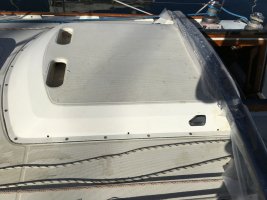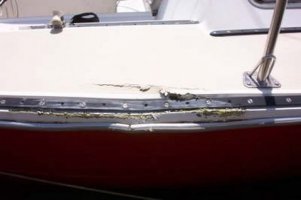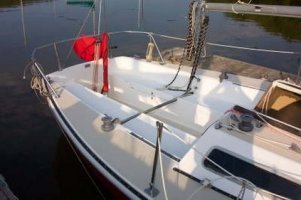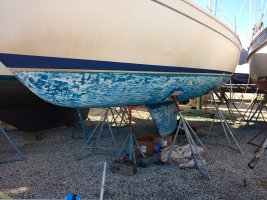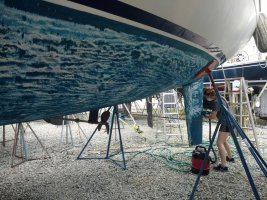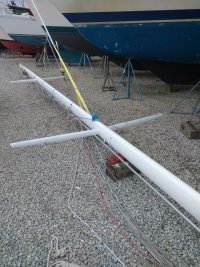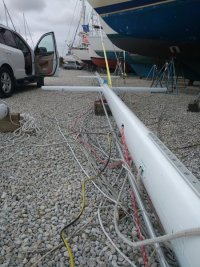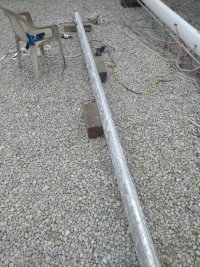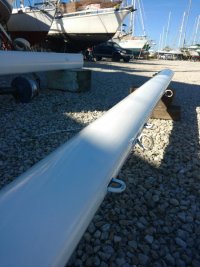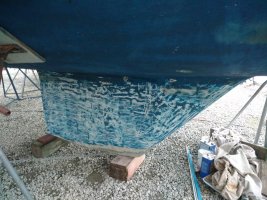Update!
We closed and the boat is on the hard. Rig has been pulled down, pressure washed, sanded, primed, and painted with EZ Poxy white. It is not perfect, but looks good, albeit a little rough in texture. I will get pics next time I go to the boat. The rigger is going to replace all of the standing rigging after I pull the chainplates for inspection.
So far I've been sanding the bottom and the ablative Micron 66 is burnishing. Going to try a vacuum scraper instead. The hull and rudder have lots of tiny blisters that look like previous repairs done with a poor polyester fairing putty. I plant to fill these with epoxy after scraping.
Though the keelbolts look fine with just surface rust from the bilge, I am noticing rust dripping down the keel from the fairing area. I am going to have the keel dropped to re-bed and repair any damaged bolts. I will seal the joint with 5200 on the bolts and epoxy at the fairing joint.
I picked up a like new Maxwell Windlass to install! Trying to figure out how to mount it...
Priorities I know, but the new NMEA 2000 B&G Triton 41 Wind/Depth/GPS Instruments from Defender are in!
https://www.defender.com/product.js...nd-gps-pack&path=-1|619045|1970782&id=4510353
I also ordered the new NMEA 2000 B&G v20 VHF which will be in soon. Going to pair this with a Vesper AIS receiver/transponder/wifi unit and a B&G Vulcan chartplotter/3g radar combo when I can find them on sale!
I installed a new Sony stereo and 4 new speakers to replace the ancient ones.
All in all, we are moving forward. I will get pics next time!
A few questions/concerns:
1) Does anyone know how Ericson bedded the keels? Am I being paranoid or is dropping the keel wise?
2) Ditto on the three amidships chainplates...no visible corrosion on the u toggle bolts and there are no internal leaks under them. Leave alone or take the whole interior apart to check what is 99% likely fine? The backstay and forestay chain plates, however show rust and will be checked and replaced if necessary.
3) Getting a perfect painted finish in an outdoor and dusty boatyard is impossible. Hence I am going to try to use Spectrum gel coat repair or a gel coat finish coat to repair the areas on the boat that need it as I mentioned above. My philosophy is to repair, not rebuild and change this boat too much.
4) Sails...I have Mylar 170 and 150 head sails, an asymetrical spinnaker, the original mainsail and 150 Genoa, and a newer 135 Genoa. Does anyone know what dacron fabric Ericson used? The main is in above average condition per the survey and to my eye the fabric looks really good, but is dirty/faded in spots. The sail is fully battened in four places, indicating it is stretched out. Thinking about sending it to
sailcare.com for cleaning, repair, and resin treatment versus buying new as we are pouring cash into this project right now! A new sail can be had for $1,300-$1,800 depending on quality of materials/features. Should I also consider some sort of re-cut? Leave alone? Thoughts? For cruising the East Coast and Bahamas I am thinking just the main, 135, and spinnaker would suffice.
